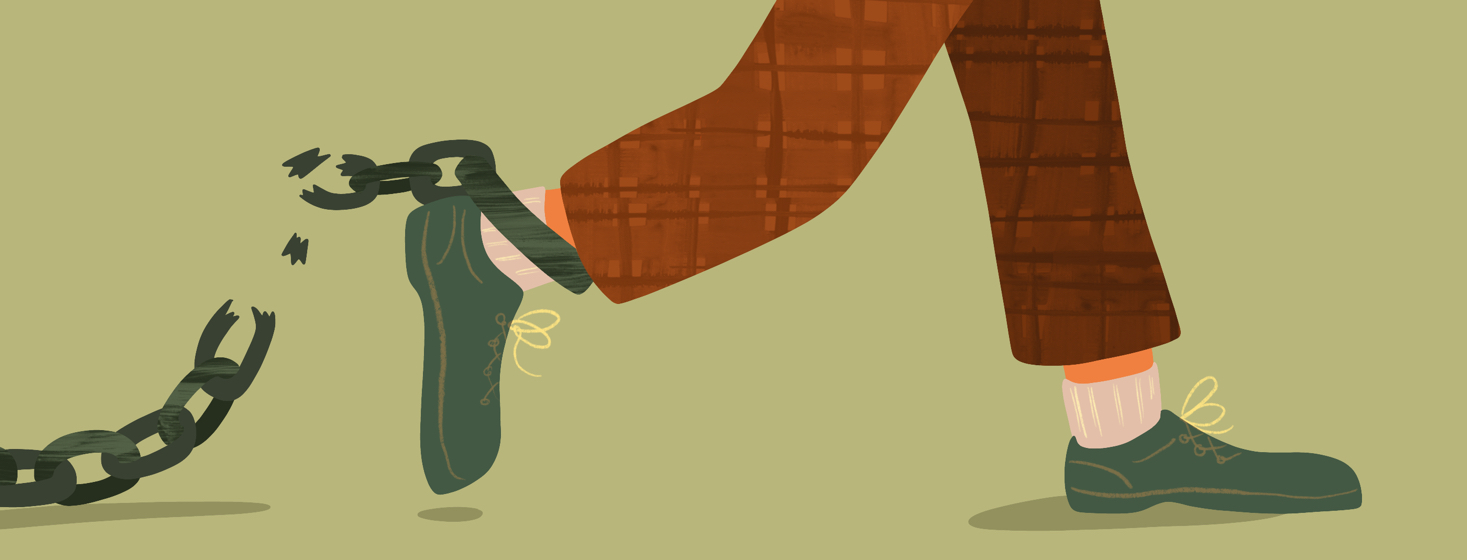Rx: Enjoy Yourself!
Have you ever noticed that you're not as aware of your migraine pain when you're enjoying yourself?
Maybe you watched a funny movie or chatted with a good friend, and for a few blissful moments, you forgot all about your migraine attack. It's not that you were just distracted from your pain, your pain actually went away when you were fully enjoying yourself.
How does pain become chronic?
Here's why, according to the latest discoveries in neuroscience about how pain becomes chronic: Your body has sensations all the time, but it's your brain that decides if something is painful, pleasurable, or neutral. Constant fear and anxiety make the brain hyper-vigilant and more susceptible to both physical and emotional pain. An overly fearful brain mistakenly interprets normal sensations as dangerous. This fear is what fuels the pain for most chronic pain conditions. The brain incorrectly perceiving the world through a lens of danger results in neuroplastic pain.1
What is neuroplastic pain?
Neuroplastic pain occurs when there is no structural damage to the body that is causing the pain, but the pain persists as the result of the brain overreacting to normal stimuli.1
What happens when you're enjoying yourself?
When you're enjoying yourself, on the other hand, a few wonderful things happen:
- You are not experiencing fear, so you are depriving the pain of its fuel source, and your pain dissipates.
- The pain is not as important to you (because you're too busy having fun).
- You are training the brain to become more sensitized to pleasurable sensations rather than painful ones (BONUS!). How does your migraine brain get hyper-sensitized to pain?
What does pain have to do with fear?
With neuroplastic persistent pain, your primitive brain gets caught in a fear-pain-avoidance cycle. Fear drives the pain, and the pain leads you to avoid triggers, causing you to become more fearful of triggers. The more you avoid triggers, paradoxically, the more hyper-sensitive you, unfortunately, become to them.
With migraine, that can lead us to become fearful of nearly everything!
Light, sound, alcohol, caffeine, smells, physical activity, sleep, screens, random foods, weather... It's hard to think of something that ISN'T a potential migraine trigger.
Instead of playing whack-a-mole by avoiding endless migraine triggers, cut off the pain at its source - the fear.
So how can you experience less pain?
Most people want to get rid of their pain and migraine attacks.
Sounds sensible enough and completely understandable.
But what you really need to get rid of is the fear of the pain. Because when you focus on getting rid of migraine itself, you're actually reinforcing to your brain that migraine = danger. Otherwise, why else would you want to be rid of it?
How can you eliminate the feeling of danger?
Danger signals increase pain. When you learn to view your body's sensations through a lens of safety instead of danger, you can begin to dissolve your pain. It can be done through the practice of Pain Care Aware Yoga and Pain Reprocessing Therapy, for example. In full disclosure, I am certified in both of these modalities. My training informs the concepts I am sharing with you all.
What should you say to yourself?
Safety signals decrease pain. The way we talk to ourselves about our pain makes a difference. Simply communicating messages of safety to yourself when you are feeling mild migraine symptoms can help retrain your brain: "These are safe sensations. It's just my brain overreacting to normal stimuli. There's nothing wrong with me. I am ok."
How can you enjoy life again with migraine?
You most likely have had to give up or cut back on activities that once brought you joy because of migraine. Migraine has probably forced you to cancel plans on more than one occasion or preemptively stop doing some activities altogether because you've feared getting an attack.
But by cutting out the things that bring you joy, you're also negatively impacting your mental health, which increases your pain even further.
How do I manage that with my treatment plan?
So make enjoyable activities part of your treatment plan. Let yourself feel safe and try out your favorite activities again in small ways. Listen to your favorite music, go for a walk, doodle...It doesn't have to be huge or at the full capacity of what you used to be able to do. If you used to compete in basketball championships, just start with shooting hoops. Simply reconnecting to that feeling of fun for a few minutes can change your whole outlook.
Even leaning into simple positive sensations like your breath, your cozy bed, or a warm shower and fully enjoying those sensations can get you started on the path of retraining your brain to interpret physical sensations through a lens of safety and not danger.
The safer and happier you feel, the less pain you will experience.
What do you find enjoyable?
So go ahead and write yourself your own prescription: Enjoy yourself once daily or more as needed.
What one small minute-long enjoyable activity can you start incorporating back into your daily life?

Join the conversation